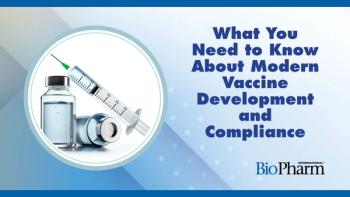
FDA Releases Guidance on Biosimilar Nomenclature, Requests Comments on Interchangeable Product Naming
The long-awaited draft guidance on biosimilar naming has been posted by FDA, and within the document, the agency suggests naming follow-on biologics by a common nonproprietary name, followed by a suffix that will identify the manufacturer of the particular biosimilar. The naming scheme is consistent with the way the agency labeled Zarxio (filgrastim-sndz), the first biosimilar product to be approved by FDA. The naming convention will be used for all future biosimilar products and will also be applied retroactively, meaning the naming convention will apply to biologic products (submitted for approval through the 351[k] or 351[a] pathways) that are already on the market.
The renaming of all biologic medications has a dual purpose, says FDA: to facilitate the “routine” use of suffixes for biologics, and to “avoid inaccurate perceptions of the safety and efficacy of biological products based on their licensure pathway.” In other words, FDA does not want healthcare providers to judge a drug’s quality based on its name. As such, FDA will use the same nonproprietary name for biosimilars (i.e., the generic or “core name”) plus a manufacturer-specific suffix; taken together, the core name and suffix will produce a “proper name”.
Although FDA did not provide a full rollout plan for how all the existing biologics will be renamed, it did say that it intends to “assign distinguishing suffixes to a limited group of these products.” The originator biologics that will get new designations first are those reference products that will be susceptible to biosimilar competition in the near future, and FDA is considering a rulemaking action to implement the retrospective naming of biologics. For future products, manufacturers will propose suffixes for their products themselves in application documents. It is still unclear if these suffixes will be required to directly reference the manufacturer, as in the case of Sandoz’s filgrastim-sndz, or if the suffix will be chosen based on other parameters, but FDA said the suffix should be unique, “devoid of meaning”, and should not be promotional. For example, proposing adalimumab-best as a proper name for Humira would likely be blocked by the agency. The suffix also cannot be a commonly used abbreviation in clinical practice, contain reference to a drug core name, or be confusingly similar to the originator product’s suffix (once assigned) or to a similar product’s suffix.
Some biological products will be exempt from the renaming initiative, says FDA; these include products “for which a proper name is provided in the regulations” and those medications that already have robust pharmacovigilance programs in place. FDA attests that current originator products will benefit from a suffix title, as it will help with pharmacovigilance efforts. It’s unclear how many originator biologics will actually be renamed, as the directives in the FDA guidance are meant as suggestions, not requirements, and it may be difficult to assess which drugs already have “proper names” by FDA standards and which ones do not.
Though FDA said the naming protocol is meant to prevent inadvertent substitution among biologic products that have not been determined to be interchangeable, the agency did not say how it will label interchangeable biologics and how these are to be differentiated among the other products in the same class. All the agency said was that it was “considering whether the suffix should be unique or should be the same as the reference product.” If an interchangeable product shared the same suffix as the originator, however, the tracking of a drug’s safety by its suffix would not be feasible, and pharmacovigilance problems could persist. Determination of interchangeability and the naming of interchangeable products will be covered in a future guidance, and FDA requested feedback on how to name interchangeable products.
Related biological products
FDA categorized products not just as originator or biosimilar, but as originator, related biological product, or biosimilar. A related biological product was defined by the agency as a biosimilar that may be licensed for fewer indications than the originator (i.e., in cases where indications are not extrapolated), is licensed for fewer routes of administration than its innovator counterpart, or has a different packaging/drug-delivery system than the originator. FDA explicates that related biologic products are “not required to include any comparative data to any other biological product in support of licensure,” unlike the applications for true biosimilars. The “related biological product” category likely includes products submitted through a biologics license application (BLA); these products are treated more like competing brands in the same class and are not traditionally called biosimilars. An example of this type of product is Teva’s Granix (tbo-filgrastim) injection, which was approved in the US prior to Zarxio and could be considered by some as the true “first biosimilar”, even though it is not designated as a biosimilar because it was not submitted through the biosimilar pathway. Teva’s product was released before FDA released any significant guidance on biosimilars. In the case of tbo-filgrastim and another product, ado-trastuzumab emtansine, FDA justified the use of unique proper names (with prefixes), saying the prefixes were necessary to reduce medication errors. FDA said it may continue to use prefixes “where appropriate” when a suffix does not suffice.
The Purple Book
While FDA says that the proposed naming program will help facilitate use of The Purple Book to help prescribers make decisions for their patients, AbbVie has pointed out that because The Purple Book does not identify indications or routes of administration for which a product has been found biosimilar to its reference product, it is not an adequate resource to help providers make informed decisions; only product-specific disclosures on a biosimilar’s label will be adequate for this purpose. As mentioned previously, for related biological products that do not share all of the same indications/routes of administration, FDA may consider the continued use of prefixes.
Healthcare computerized systems/databases
FDA says that national drug code numbers (NDCs) and proprietary names are not sufficient to track adverse events in electronic and billing records, and that NDC numbers are not routinely recorded in settings where a physician is administering a biologic. Sharing the same core name, said FDA, will allow similar products to be grouped together in electronic databases. Prefixes may cause related biological products to not be grouped with their counterparts with the same proper names, however, an issue that the National Council for Prescription Drug Programs (NCPDP) has presented to FDA in previous communications. NCPDP says that giving biosimilars the same nonproprietary names would mean that products with shared ingredients would not necessarily be alphabetically adjacent, and the effort to map therapeutic alternatives would require significant time and resources. These arguments may be especially relevant if prefixes continue to be used; a unique naming system for interchangeable products also has the potential to cause sorting issues.
Biosimilars Council: No suffix necessary
"Adverse events and product recalls for small-molecule and biologic drugs already are successfully identified using the national drug code (NDC code), and lot number and company name, and there is no compelling evidence that biosimilars should be handled differently," said Bertrand C. Liang, chairman of the Biosimilars Council, in an emailed statement. He argues there is already a successful system for shared international nonproprietary names in practice overseas. "Adding a random collection of letters to the product’s nonproprietary name confers no additional safety benefit, and in fact, would require the healthcare professional to be armed at all times with a code-breaking reference." In summary, the Biosimilars Council believes the additional suffix proposed would needlessly complicate the current prescribing system.
Source:
Newsletter
Stay at the forefront of biopharmaceutical innovation—subscribe to BioPharm International for expert insights on drug development, manufacturing, compliance, and more.





